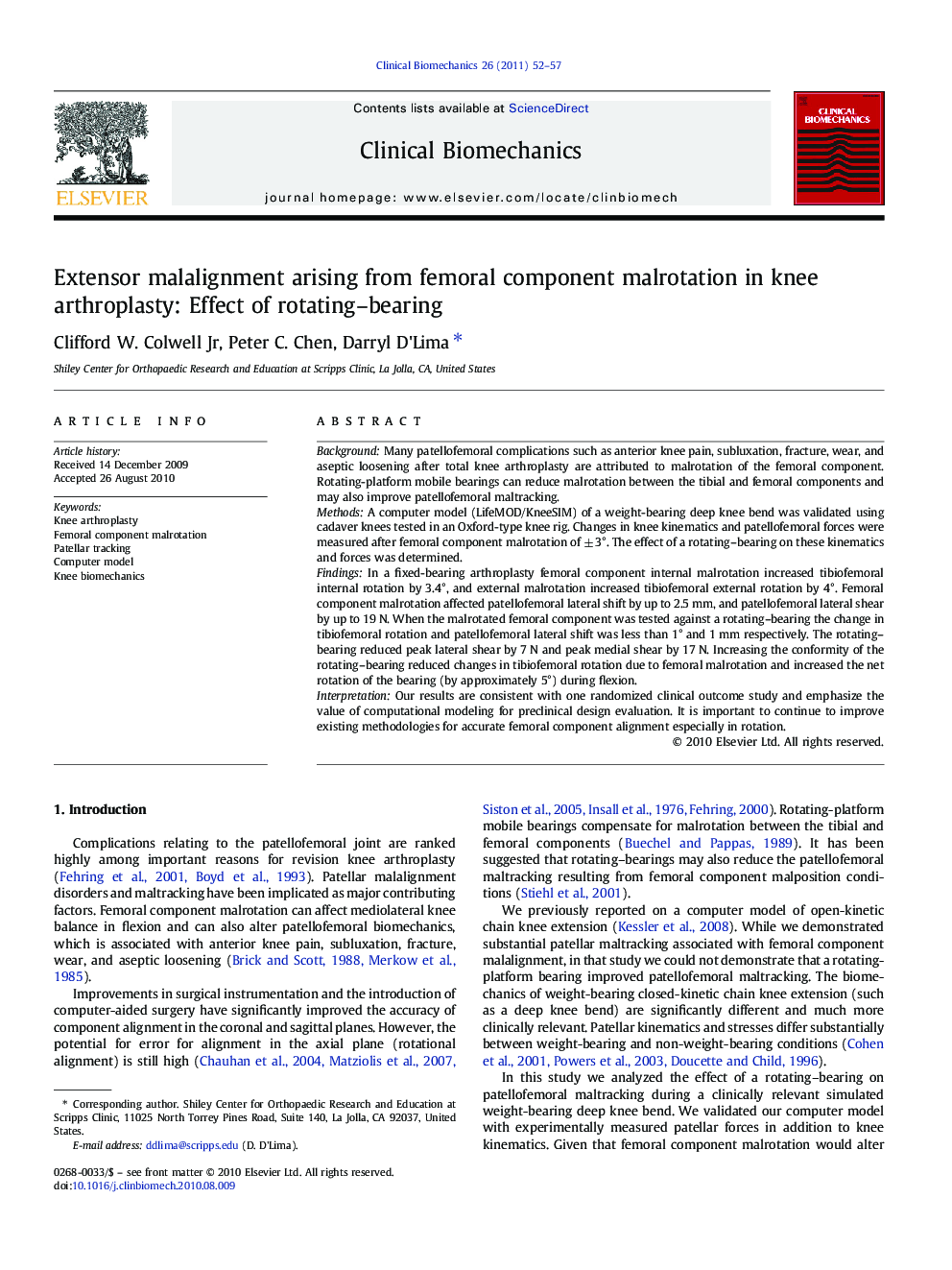| کد مقاله | کد نشریه | سال انتشار | مقاله انگلیسی | نسخه تمام متن |
|---|---|---|---|---|
| 4051005 | 1264969 | 2011 | 6 صفحه PDF | دانلود رایگان |

BackgroundMany patellofemoral complications such as anterior knee pain, subluxation, fracture, wear, and aseptic loosening after total knee arthroplasty are attributed to malrotation of the femoral component. Rotating-platform mobile bearings can reduce malrotation between the tibial and femoral components and may also improve patellofemoral maltracking.MethodsA computer model (LifeMOD/KneeSIM) of a weight-bearing deep knee bend was validated using cadaver knees tested in an Oxford-type knee rig. Changes in knee kinematics and patellofemoral forces were measured after femoral component malrotation of ± 3°. The effect of a rotating–bearing on these kinematics and forces was determined.FindingsIn a fixed-bearing arthroplasty femoral component internal malrotation increased tibiofemoral internal rotation by 3.4°, and external malrotation increased tibiofemoral external rotation by 4°. Femoral component malrotation affected patellofemoral lateral shift by up to 2.5 mm, and patellofemoral lateral shear by up to 19 N. When the malrotated femoral component was tested against a rotating–bearing the change in tibiofemoral rotation and patellofemoral lateral shift was less than 1° and 1 mm respectively. The rotating–bearing reduced peak lateral shear by 7 N and peak medial shear by 17 N. Increasing the conformity of the rotating–bearing reduced changes in tibiofemoral rotation due to femoral malrotation and increased the net rotation of the bearing (by approximately 5°) during flexion.InterpretationOur results are consistent with one randomized clinical outcome study and emphasize the value of computational modeling for preclinical design evaluation. It is important to continue to improve existing methodologies for accurate femoral component alignment especially in rotation.
Journal: Clinical Biomechanics - Volume 26, Issue 1, January 2011, Pages 52–57